

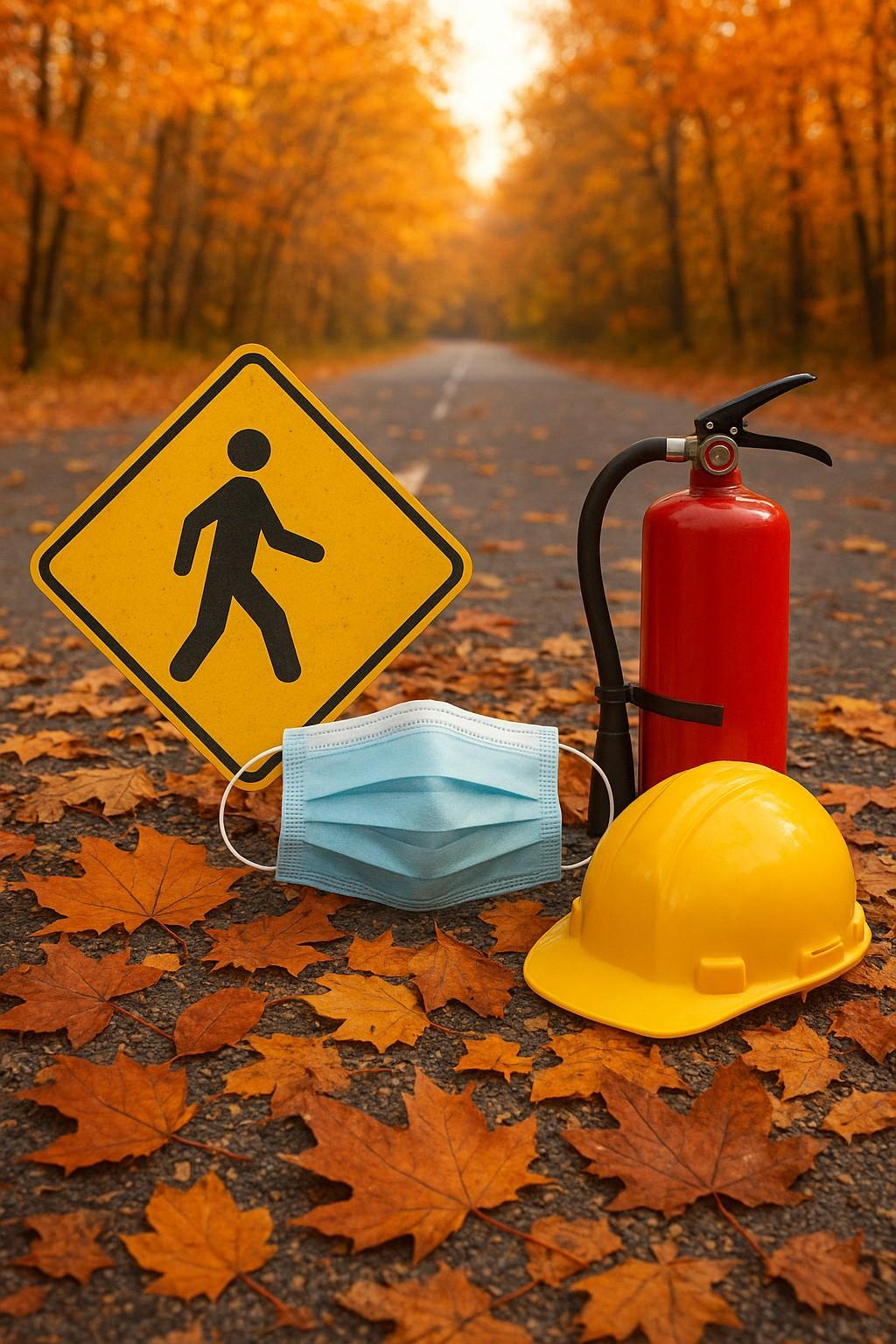






October is designated Na onal Pedestrian Safety Month by NHTSA to raise awareness during the most dangerous me for pedestrians. While walking benefits our health, environment, and quality of life, pedestrian fatali es have surged drama cally. The Federal Highway Administra on (FHWA) and local advocates are collabora ng on comprehensive campaigns to educate both drivers and pedestrians, working relessly to reduce these tragic numbers.

Pedestrian fatali es in 2023: 7.3K Lives Lost
Pedestrian hurt in traffic crashes: 68K Injuries
Frequency of pedestrian deaths: 72 Minutes Rise in fatali es since 2013: 57% Increase
Created by Robin Small
Pedestrian safety requires a coordinated effort from individuals and communi es. Whether you're walking, driving, or advoca ng for change, your ac ons can help prevent tragedies and create safer environments for everyone.
· Always use sidewalks when available
· Cross at marked crosswalks or intersec ons
· Avoid phone distrac ons while walking
· Wait for traffic to stop before crossing
· Stay visible with bright or reflec ve clothing
· Slow down in pedestrian areas
· Yield to pedestrians at crosswalks
· Never pass vehicles stopped for pedestrians
· Watch for pedestrians when backing up
· Stay alert and avoid distrac ons
Together, through awareness, educa on, and community ac on, we can reduce pedestrian injuries and fatali es and make walking safer for everyone. Every step toward safety counts, and your involvement can help save lives in your community.

Workplace fires pose a devasta ng threat to both human lives and business opera‐ons. According to Frontline Data Solu ons, these preventable disasters cause hun‐dreds of fatali es annually and cost businesses over $2.3 billion in damages, lost produc vity, and recovery expenses.
Common Fire Sources
· Faulty electrical equipment and over‐loaded circuits
· Chemical spills and improper storage
· Overheated cooking oils in break
Cri cal Hazards
· Combus ble materials stored improperly
· Poor housekeeping and clu ered spaces
· Unmaintained fire safety equipment
· Blocked emergency exits and pathways
Preven on Benefits
· Protects employee safety and wellbeing
· Minimizes costly business disrup ons
· Reduces insurance premiums and lia‐bility
· Maintains business con nuity and rep‐uta on


Created by Theron Henderson / Robin Small
Crea ng a fire-safe workplace requires proac ve planning, regular maintenance, and employee engagement. These prac cal steps will help you build a comprehensive fire preven on strategy that protects lives and preserves business opera ons.
Maintain Clear Evacua on Routes
Keep all exits unobstructed and evacua on routes clearly marked with illuminated signage. Never use elevators during fire emergencies stairs are the safest escape route.
Conduct Regular Risk Assessments
Systema cally iden fy fire hazards, control igni on sources, and ensure all fire protec on equipment is properly maintained and inspected according to safety standards.
Training
Provide comprehensive training on emer‐gency procedures, proper fire ex nguisher use, and evacua on protocols. Regular drills reinforce these life-saving skills.

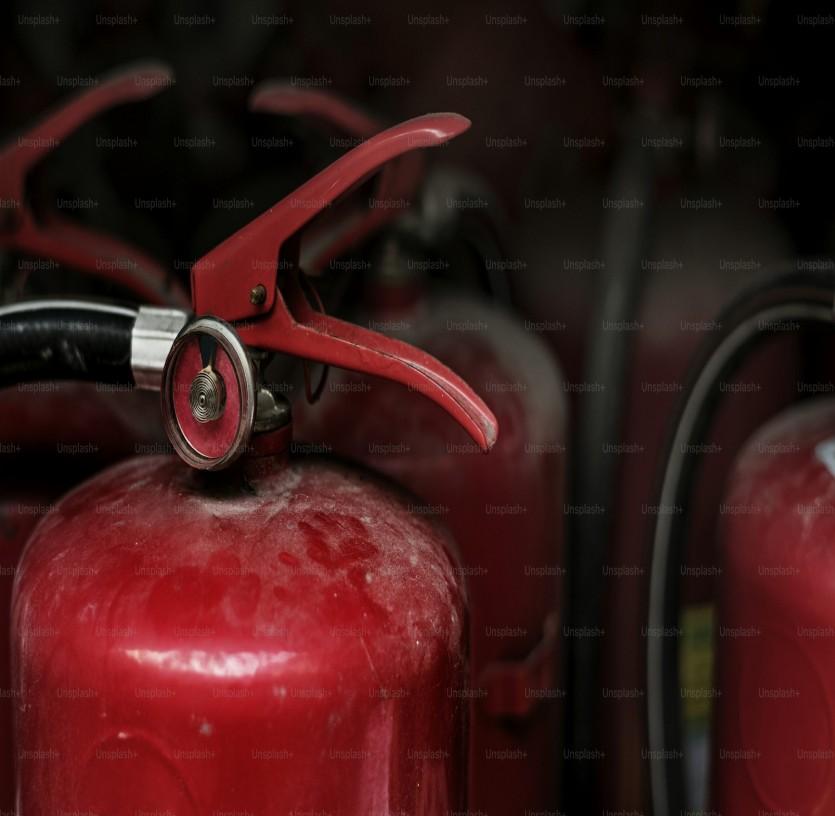
Reduce Fire Load with Digital Solu ons
Digi ze paper documents to minimize combus‐ble materials and maintain secure cloud back‐ups to protect cri cal business informa on from fire damage.
Daily Safety Checklist:
· Remove debris and maintain clean workspaces
· Store flammable materials in designated areas
· Inspect electrical systems for damage
· Ensure smoking areas are away from combus‐bles
· Check fire safety equipment func onality



Ergonomic Assessments: Supporting Health and Productivity Ergonomics plays a cri cal role in crea ng safe and healthy workplaces. The County of Riverside’s Safety Loss Control Division conducts ergonomic assessments to iden fy risks, prevent injuries, and improve employee comfort and efficiency.
An ergonomic assessment is a structured evaluation of a workplace to ensure that workstations, tools, and tasks it the employee’s physical needs. Trained evaluators observe employees’ postures, workstation layouts, and job demands to identify risk factors such as repetitive motions, awkward positions, or prolonged sitting. The goal is to design solutions that reduce musculoskeletal strain and improve safety.

1. Observation: Evaluators review employee posture, workstation setup, and job tasks.
2. Discussion: Employees share any discomfort, pain, or challenges they face while working.
3. Adjustments: Recommendations are made to optimize chair height, monitor level, keyboard position, and lighting.
4. Follow-Up: Assessors provide resources and check back to ensure changes are effec ve.
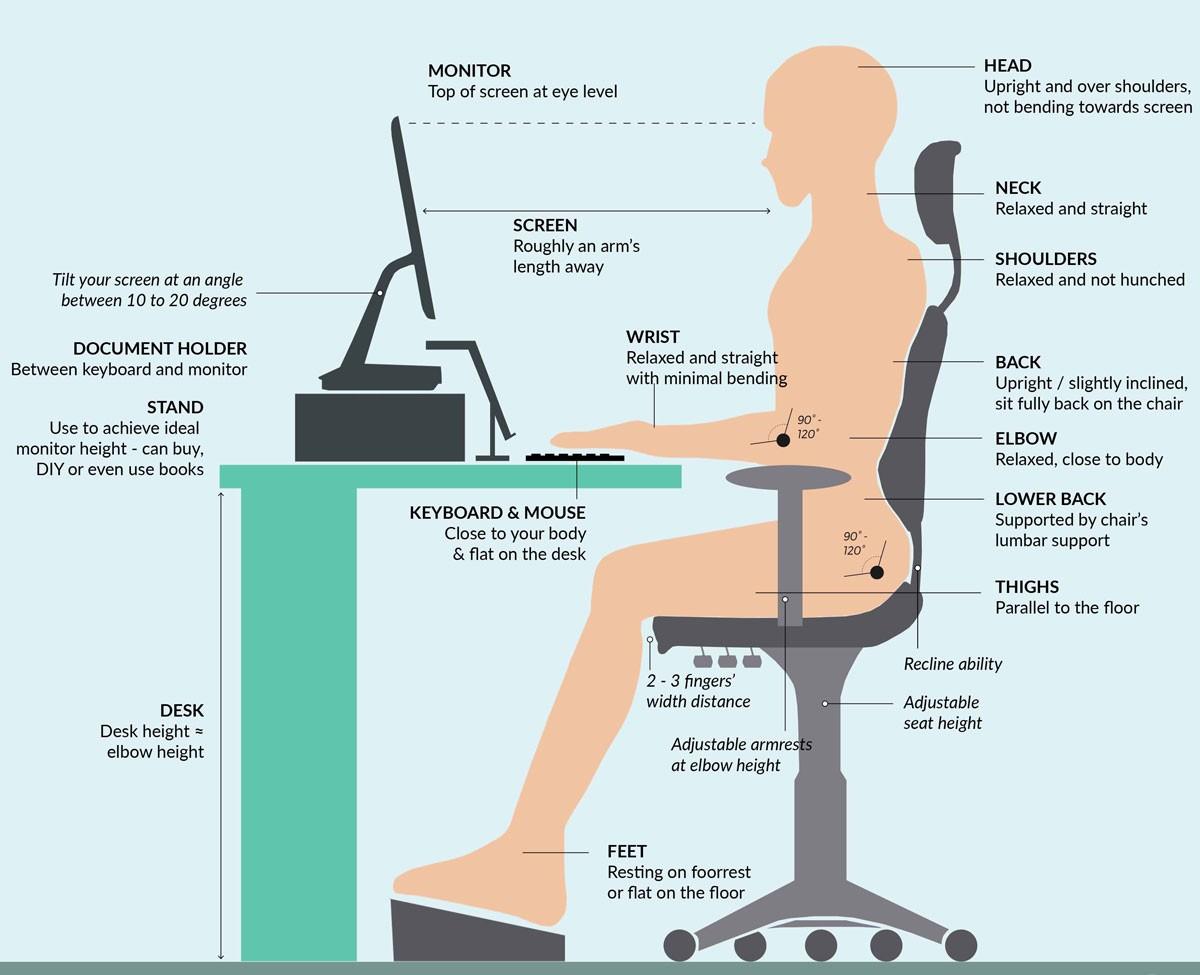
A Safer, Healthier Future
Inves ng in ergonomic assessments leads to healthier, more produc ve employees.
Benefits include:
- Reduced risk of musculoskeletal disorders (MSDs).
- Improved employee comfort and job sa sfac on.
- Decreased absenteeism and workers’ compensa on claims.
- Increased efficiency and overall morale in the workplace.
Ergonomic assessments are an essen al tool for crea ng a safer and more suppor ve workplace. The Safety Loss Control Division encourages departments to schedule evalua ons regularly and to adopt ergonomic best prac ces to protect employee health.
Created by Rashad Harris


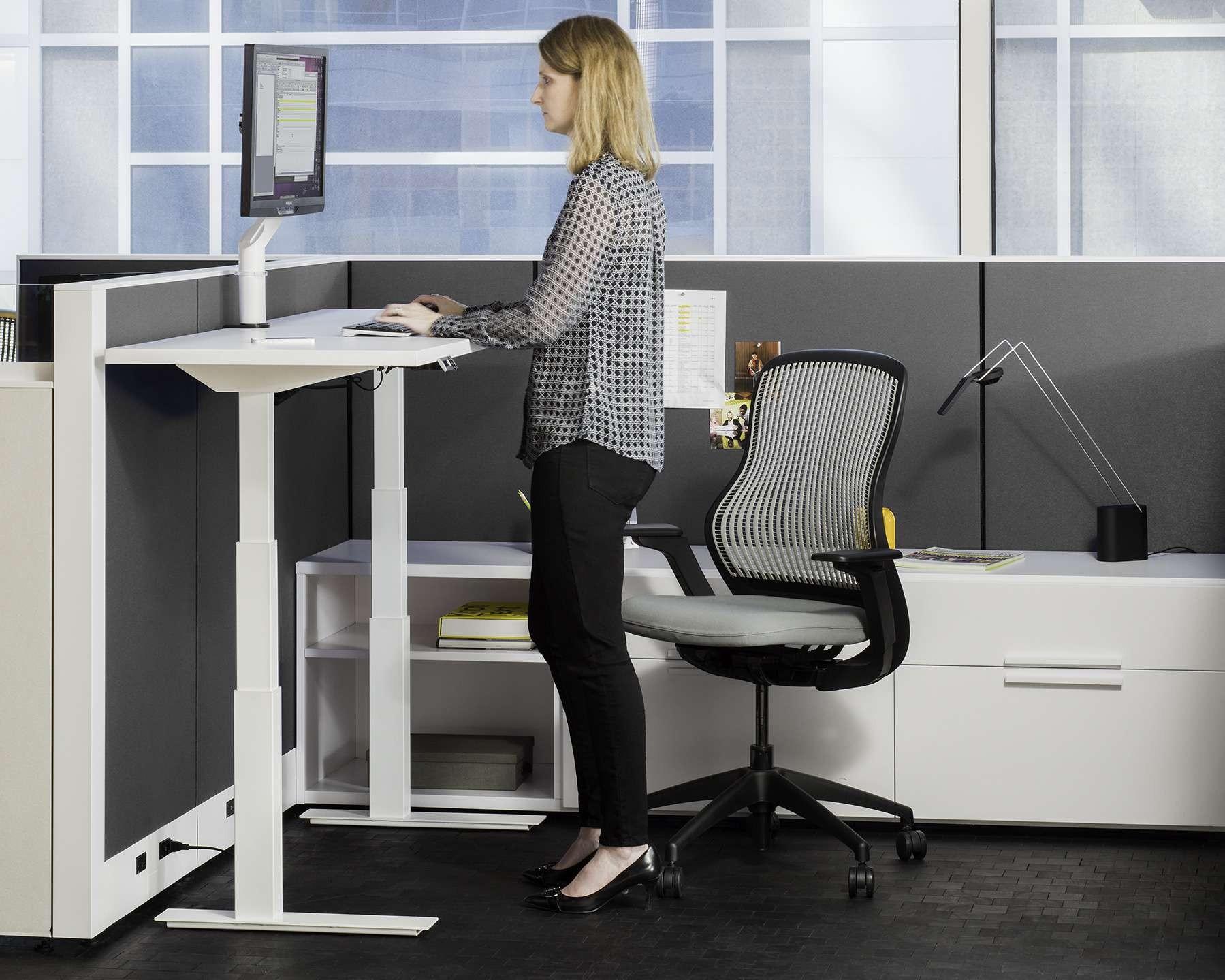


Tips for Maintaining Good Ergonomics Daily
• Keep feet flat on the ground and avoid crossing legs.
• Posi on monitors at eye level to prevent neck strain.
• Take micro-breaks every 30–60 minutes to stretch and move.
• Adjust chairs and desks to maintain neutral postures.
• Use ergonomic accessories like wrist supports or footrests when needed.
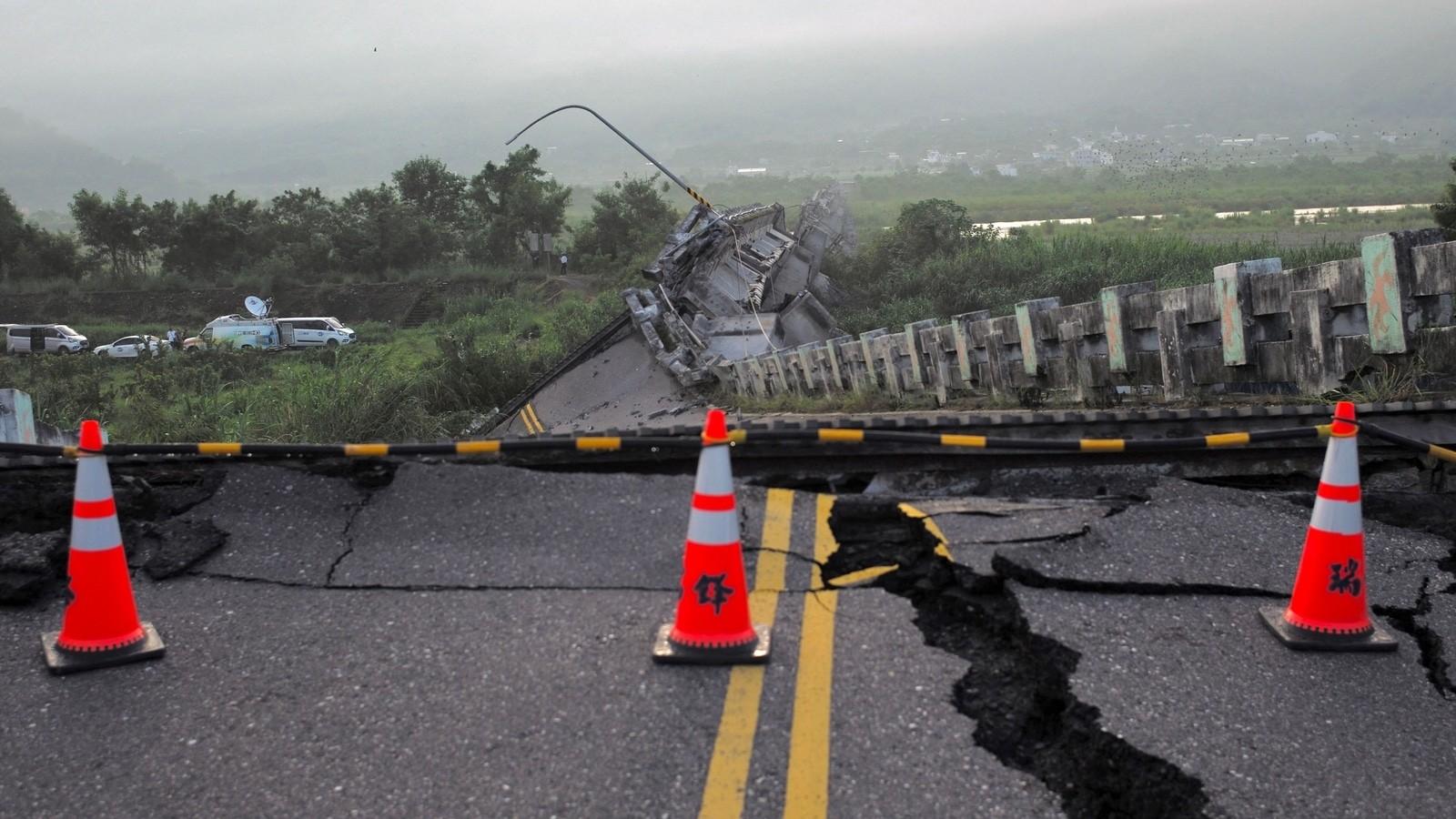


Created by Robin Small / Rashad Harris
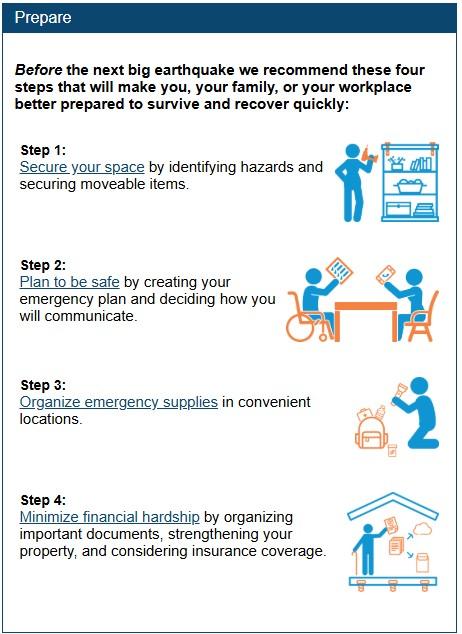




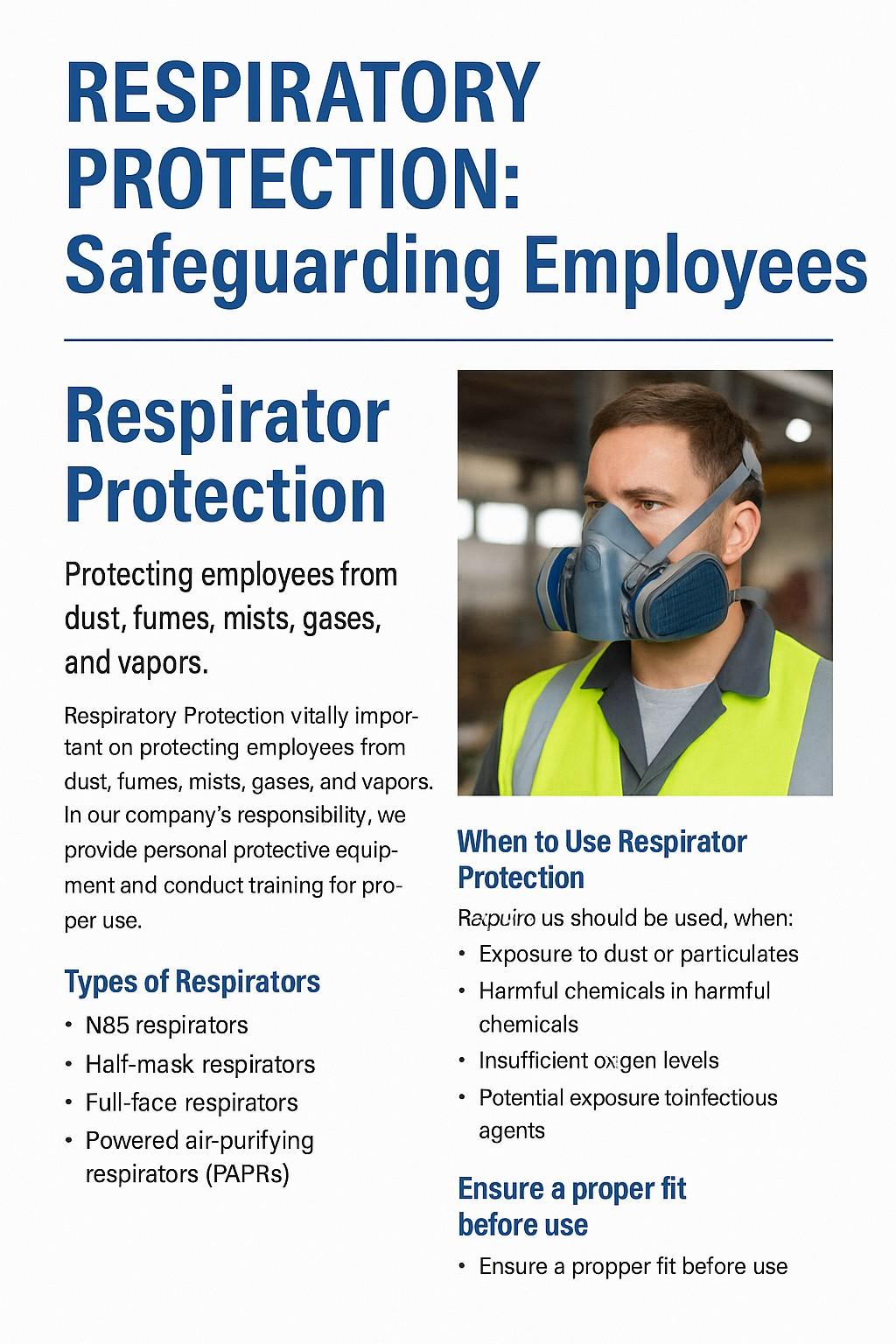
Created by Rashad Harris
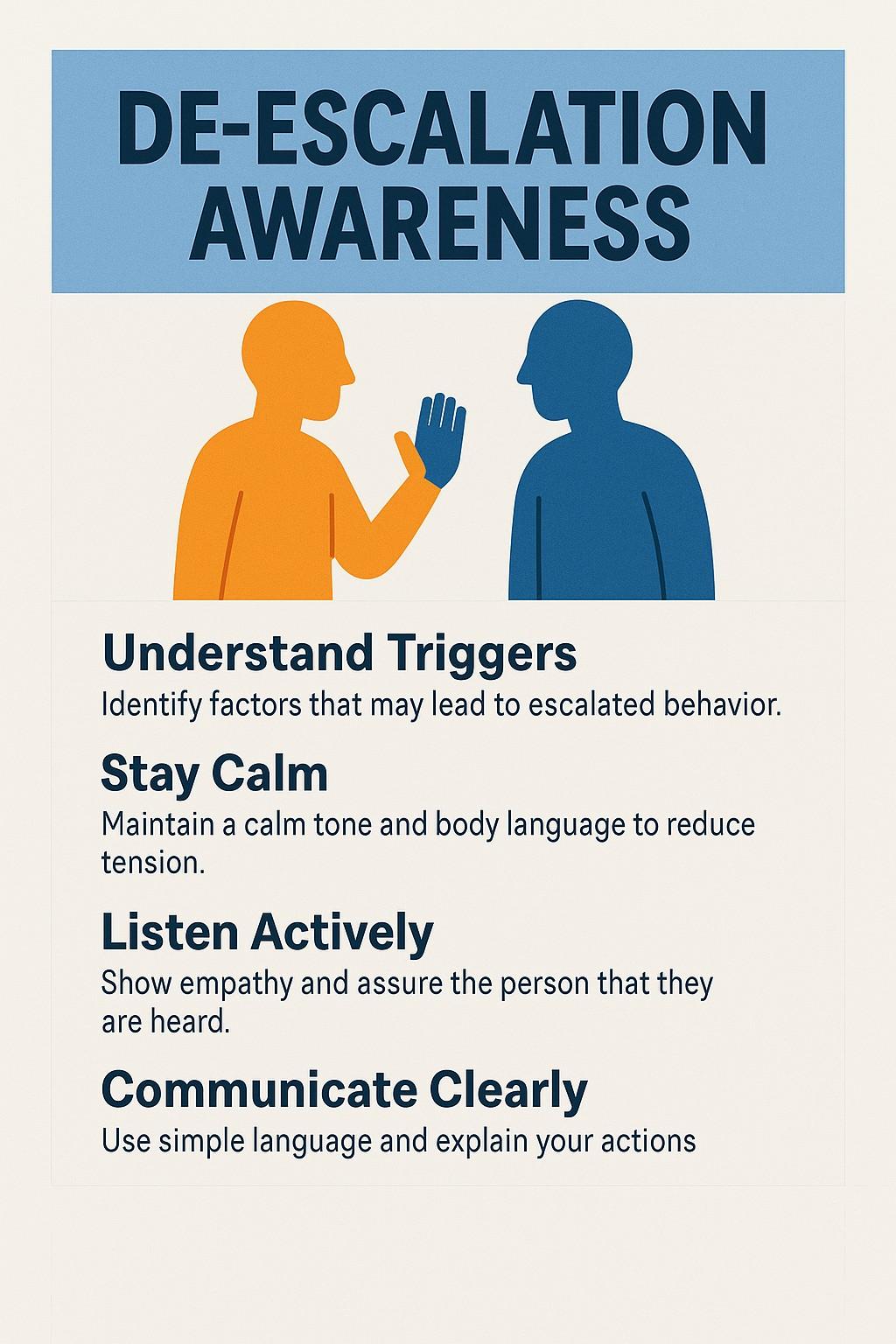
Created by Rashad Harris

The County of Riverside is committed to maintaining safe and responsible use of its fleet vehicles. To ensure that only qualified and authorized employees operate County-owned vehicles, all drivers are required to complete the GEN30 – Authoriza-
The GEN30 form is a safeguard that:
· Confirms employees are eligible and authorized to operate County vehicle or privately-owned vehicles for o icial County business.
· Helps protect the County from liability and reduces the risk of accidents.
· Reinforces safety by requiring employees to meet driving and training standards before being allowed behind the wheel.
Any employee who may drive a County vehicle or privately-owned vehicle for work purposes must complete the GEN30.
Key requirements include:
· Holding a valid California driver’s license for the class of vehicle being operated.
· Completion of the mandatory vehicle operation safety training as outlined in SSOM Document 4001.
· Undergoing a driving record review to ensure compliance with County standards.
Required Updates, a new GEN30 must be submitted if:
F Your driver’s license expires, is suspended, or revoked.
F You transfer to a position with di erent driving responsibilities.
F You transfer to a di erent department.
Created by Robin Small / Rashad Harris


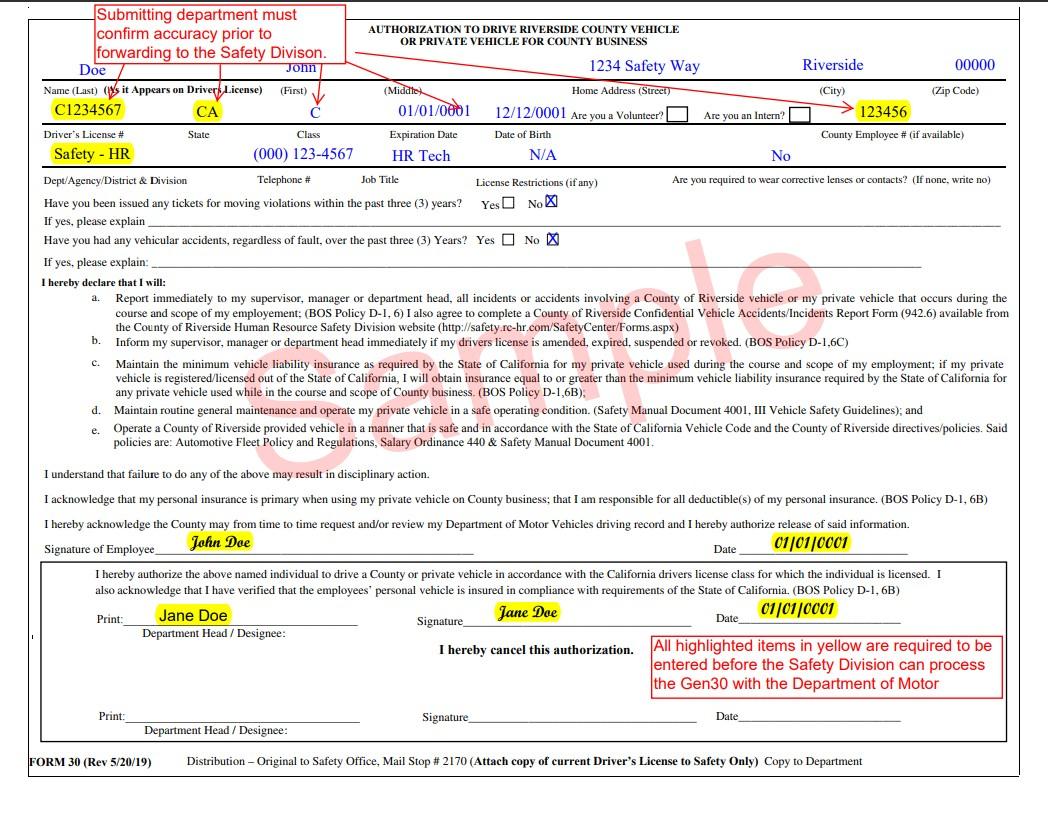
Access the Form – Employees can find the GEN30 form on the Safety Loss Control website. or request it through their department’s assigned Safety Coordinator.
Complete & Sign – Fill out the form and provide supporting documents (e.g., driver’s license copy, training certificates).
Supervisor Approval – Submit the form to your supervisor or designated approving authority.
Final Processing – Once approved by your department head/designee, the form is sent to the Safety Loss Control Division for final review and recordkeeping.